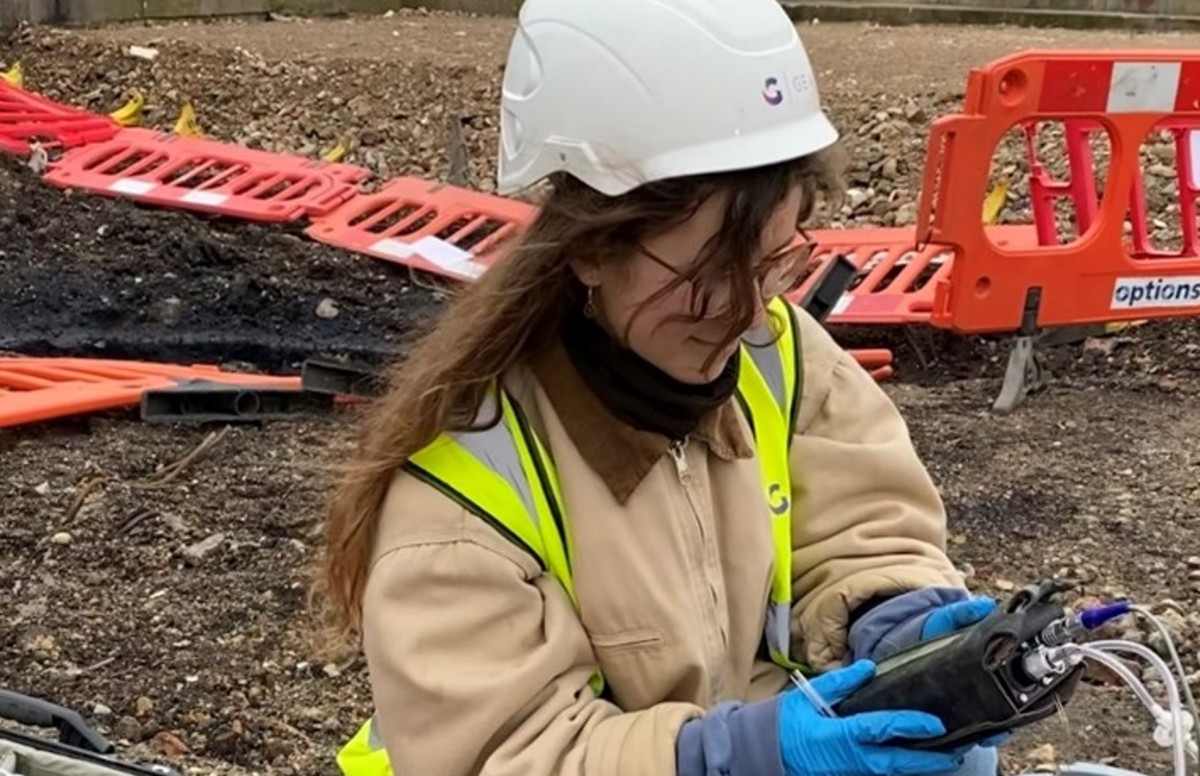The Best Strategy To Use For Geotheta
The Best Strategy To Use For Geotheta
Blog Article
9 Simple Techniques For Geotheta
Table of ContentsAbout GeothetaFascination About GeothetaGeotheta Can Be Fun For EveryoneThe Best Strategy To Use For Geotheta
They work together with civil engineers, architectural engineers, designers, and various other experts to integrate geotechnical factors to consider into the total task design and building and construction procedure. This needs effective teamwork, coordination, and communication to make certain that the geotechnical facets align with the job purposes and meet regulative needs.Mining & Products Engineering: Principles of drilling, infiltration rates, and variables affecting the choice of exploration approach. Characteristics of nitroglycerins, shooting systems and blast patterns. Blasting strategies in surface and underground operations. Unique blasting strategies at excavation boundaries. Vibration and noise control. Mechanical and continual strategies to fragmentation, including longwall shearing and fullface boring.
Modelling of fragment and particle dimension circulations; comminution as a transfer function. Comminution technology: crushing, grinding, dimension category. Integrated analysis of fragmentation and comminution procedures. Provided by: Mining & Products Design.
See This Report on Geotheta
Bachelor's level programs in civil, geotechnical, geological, and ecological design commonly last 4 years and include general education and learning courses in English, social science, and the liberal arts, in addition to programs in advanced maths, structural geology, and liquid mineralogy. (https://geotheta.edublogs.org/2024/08/02/unlocking-the-world-of-geotechnical-engineers-with-geotheta/)
Geotechnical design involves the evaluation of the dirt and rock problems at a particular website, and their effects for the growth of that site. As the majority of frameworks depend on the ground for support, it is without surprise that a thorough understanding of the ground conditions, and the suitability of structure systems, are essential to the long-term security and performance of the building or framework.
Specialising in the investigation of geological developments and ground behaviour, geotechnical designers execute clinical investigations and screening to understand the effect these geological developments might have on the layout and building of building, civil and facilities tasks. This know-how is critical for the style and building and construction of buildings, roadways, passages, dams, bridges, and supply of water and sewage systems.
The geotechnical group at Douglas Allies consistently speak with engineers, layout designers, programmers, and contractors to make suggestions on layout and growth propositions to make certain that the constructed frameworks are suitably developed for the ground conditions. For instance, the style of footing systems needs to consider the weight of the framework, the capacity of the ground to sustain that weight with each other with activity resistances and reliable building and construction.
Geotheta - The Facts
This job is significantly streamlined by the use of our Douglas Map geospatial system which makes this details easily accessible in an easy to make use of web internet browser interface. A geotechnical designer will route the boring of boreholes and examination pits to accumulate soil and various other samples, and additionally evaluate surface area functions and ground direct exposures to develop a geotechnical design of the subsurface conditions.
Depending on the job kind and ground conditions experienced, laboratory testing might to name a few things examine toughness, compressibility, reactivity and/or leaks in the structure of soil and rock examples. Hereafter information is gathered and looked at, the results are made use of for a geotechnical design of the website, which is typically presented as areas across the website.

A geotechnical examination by nature can only examine the ground problems at the locations drilled or excavated. All-natural variations in dirt and rock problems can occur across a site and between examination locations. It is for that reason great practice that the geotechnical designer be preserved throughout construction of the project to offer on-site confirmation that the ground problems experienced follow the assumptions and guidance offered in the geotechnical examination report.
The Definitive Guide for Geotheta
Geotechnical engineers use their thorough understanding of soil and rock to examine danger and resolve problems on varied facilities projectsGeotechnical engineering is a specialist branch of civil design which considers the behaviour of planet products and the application of soil and rock mechanics. Geotechnical Engineers. As a geotechnical engineer, you will certainly examine the physical, mechanical and chemical residential properties of soil and rock in order to make structures, keeping structures and earthworks
Geotechnical design is closely linked to and overlaps with, both design geology and ground engineering - https://www.intensedebate.com/people/geotheta. It's possible to be experts in geotechnics or help a geotechnical business yet be referred to as a design rock hound or a ground designer. As a geotechnical engineer, you'll need to: construct and keep connections with customers and various other experts involved in the site, throughout each projectmaintain safety and security requirements on site be conscious of expense implications when you make recommendationsstudy geological maps and airborne photos from a variety of resources and from various time periodsexamine building and construction intends to see exactly how feasible they are based on your understanding of the siteinvestigate threats or geological dangers for the sitesearch for eco delicate features, such as land fill begin to create valid and expository ground modelsplan field investigationsdrill and evaluate samples of bedrock, dirt, groundwater and added materials manage other experts on sitesolve technical problems as they emerge, such as unforeseen frameworks at drill sitesmonitor problems during and after building and construction to make certain frameworks are steady in the short and long termadding information gathered on site to your preliminary researchcreating geotechnical estimations, illustrations, and two or three-dimensional computer versions translating the datamaking suggestions regarding the proposed usage of the website

Report this page